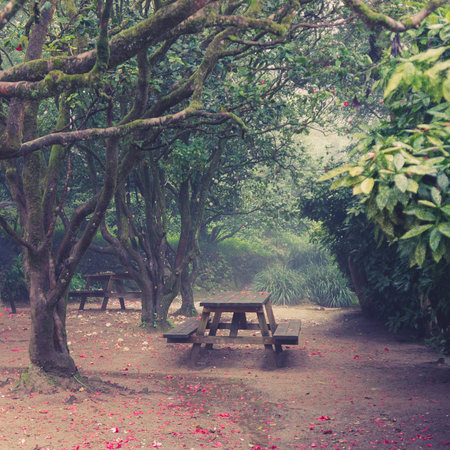A Stroll Through Ancient British Woodlands
Step into the magical embrace of Britain’s ancient woodlands, where every footfall feels like a page turning in a living storybook. These enchanting forests have whispered their secrets for centuries, nurturing not only rare flora and fauna but also the imagination of generations. As families wander beneath towering oaks and twisty hazel branches, they are walking through layers of history—places once roamed by druids, nobles, and common folk alike. For children and parents, these woodlands offer far more than just greenery; they’re natural classrooms brimming with hidden treasures waiting to be discovered. In every mossy hollow and sun-dappled glade, there is a sense of wonder that awakens curiosity about the past and invites us to tread gently as modern-day explorers. The British woodlands are not just relics of bygone eras—they are thriving ecosystems where adventure, learning, and respect for nature go hand in hand.
2. Foraging: British Traditions and Responsible Practice
For generations, botanical foraging has been woven into the fabric of British culture, passed down through families and communities as a cherished tradition. In ancient woodlands across the UK, gathering wild plants was once an essential means of supplementing diets, creating herbal remedies, and connecting with nature. Today, this practice remains a delightful way to explore the countryside, fostering both curiosity and respect for the natural world among adults and children alike.
The United Kingdom’s rich history of foraging is reflected in classic stories, old recipes, and even local festivals celebrating seasonal harvests like blackberries or elderflowers. Whether you’re picking wild garlic in the spring or searching for sweet chestnuts in autumn, each region boasts its own specialities and customs. However, alongside these treasured traditions comes a responsibility to forage wisely and ethically—ensuring our actions protect these precious habitats for future generations.
Essential Principles of Responsible Foraging
| Principle | Description |
|---|---|
| Know Your Plants | Learn to identify edible and protected species accurately. Never pick what you cannot confidently name. |
| Take Only What You Need | Harvest modest amounts, leaving enough for wildlife and plant regeneration. |
| Respect Protected Areas | Avoid foraging in nature reserves or where signs prohibit gathering; some woodlands are protected by law. |
| Leave No Trace | Be gentle when harvesting—do not uproot whole plants—and always clear up after yourself. |
Cultural Etiquette and Family Involvement
British foraging is often a family affair, with parents guiding little ones through bluebell-carpeted woods or bramble hedgerows. Sharing folk tales about local plants or singing traditional songs can make outings more memorable and help instil a sense of stewardship. By demonstrating careful picking and gratitude for nature’s gifts, grown-ups can nurture both knowledge and empathy in younger generations.
Safety First: Setting Boundaries Together
Establish clear rules before heading out: which areas are safe to explore, which berries are off-limits, and how much should be gathered. Creating these boundaries not only keeps everyone safe but also reinforces respect for woodland ecosystems—ensuring that British botanical foraging remains a joyful tradition rooted in care for the land.
![]()
3. Recognising Flora: Common and Protected Plants
Exploring ancient British woodlands with your family can be a magical experience, but it’s important to know which plants you’re likely to encounter along the winding trails and mossy clearings. Teaching children how to recognise edible, medicinal, and protected species not only nurtures their curiosity but also fosters respect for the woodland’s delicate balance.
Edible Woodland Treasures
Britain’s woodlands are home to a variety of delicious wild edibles. Look out for wild garlic (Allium ursinum), whose broad leaves and gentle garlicky scent are unmistakable in spring. Sweet chestnuts (Castanea sativa) offer spiky cases hiding tasty nuts in autumn, while blackberries (Rubus fruticosus) tempt with juicy berries in late summer. Always encourage little ones to use field guides and forage only what they can positively identify—reminding them that “when in doubt, leave it out” is the safest rule.
Medicinal Marvels
The history of British herbal medicine is rich, with woodlands providing remedies for centuries. Elderflowers and elderberries (Sambucus nigra) are celebrated for their uses in cordials and cough syrups. Nettles (Urtica dioica), despite their sting, make nourishing teas and soups when handled carefully. It’s lovely to share these old stories while you walk, connecting children to traditions passed down through generations.
Respecting Protected Species
Some woodland plants are legally protected or considered rare due to over-foraging or habitat loss. Bluebells (Hyacinthoides non-scripta), which carpet ancient woods in spring, must never be picked or uprooted. Similarly, native orchids like the Early Purple Orchid (Orchis mascula) should only be admired where they grow. Teaching youngsters to spot these wonders without disturbing them encourages a sense of guardianship for Britain’s wild places.
By learning together how to identify common, useful, and protected plants, families can enjoy safe, sustainable foraging adventures—and help conserve the ancient beauty of our woodlands for future generations.
4. Foraging Ethics: Respecting Nature and Local Laws
When foraging in Britain’s ancient woodlands, it is essential to follow a set of ethical principles to ensure the protection of both flora and fauna. The British countryside is a shared treasure, home to countless species and delicate ecosystems that have evolved over centuries. By understanding and respecting these environments, families can enjoy nature while preserving it for future generations.
The Importance of Wildlife Respect
One of the key aspects of ethical foraging is respecting wildlife. Ancient woodlands are teeming with life—birds nesting in hollows, insects under logs, and mammals roaming the understory. Disturbing habitats, picking rare plants, or leaving litter can cause lasting harm. Always keep children and pets close, tread softly, and remind little ones to observe rather than touch where possible. This mindful approach not only safeguards wildlife but also fosters a sense of wonder and responsibility in young explorers.
Following the Countryside Code
The Countryside Code offers guidance for everyone enjoying the outdoors in England and Wales. It’s more than just rules; it’s a promise to care for the land and its inhabitants. Here are some fundamental points from the Code:
| The Countryside Code: Key Guidelines |
|---|
| Respect everyone – Be considerate to other visitors and local people |
| Protect the natural environment – Leave no trace, take litter home, avoid picking protected species |
| Enjoy the outdoors responsibly – Keep dogs under control, stick to marked paths |
Adhering to these guidelines helps ensure that woodlands remain beautiful and accessible for all.
Understanding Conservation Regulations
Many areas within ancient British woodlands are protected by law due to their ecological importance. Some plants are rare or endangered, making it illegal to pick them. Before setting out on a family forage, check whether you need permission from landowners and research which species are off-limits. Engaging children in identifying common versus protected plants can be an educational activity that builds respect for conservation efforts.
Legal Considerations at a Glance
| Action | Legal Status |
|---|---|
| Picking common wild foods (for personal use) | Generally allowed, unless otherwise stated |
| Picking rare or protected species | Prohibited under Wildlife and Countryside Act 1981 |
| Foraging in private woodlands without permission | Not permitted – always seek consent |
A Family Pledge for Ethical Foraging
Create a simple pledge with your children before each adventure: “We promise to leave things as we find them, take only what we need, and give thanks to nature.” This small ritual can help reinforce positive habits and deepen your family’s connection with Britain’s ancient woods.
5. Conservation in Action: Supporting Woodland Health
One of the most rewarding aspects of botanical foraging in ancient British woodlands is knowing that your actions can help protect these precious habitats for future generations. Families have a unique opportunity to make a positive impact, not just by what they take, but by how they interact with the natural world around them. Here are some practical tips to encourage mindful foraging and woodland conservation.
Stick to Designated Paths
While it may be tempting to wander off the beaten track in search of hidden treasures, sticking to established paths minimises disturbance to delicate ground flora and wildlife habitats. Teaching children to respect these boundaries fosters a sense of responsibility and care for nature.
Gather Responsibly
Only collect what you need, leaving plenty behind for wildlife and other foragers. Pick from abundant patches, never rare or protected species, and always check local guidelines before harvesting. This ensures plants have a chance to regenerate and thrive year after year.
Leave No Trace
Encourage children to take all litter home, including biodegradable waste like fruit peels or nutshells. Explain how even small changes can affect the woodland ecosystem, helping little ones understand the importance of looking after shared spaces.
Get Involved with Local Groups
Many communities run woodland clean-up days, tree planting events, or guided nature walks. Participating as a family not only deepens your connection with the woods but also builds community spirit and helps preserve these magical places for all.
Create Wildlife Habitats
If you’re lucky enough to live near a woodland or have access to a garden, consider building bird boxes or bug hotels using natural materials found on the forest floor (never cut living plants). This hands-on activity supports local wildlife and offers hours of educational fun.
Share Your Knowledge
Finally, pass on your enthusiasm for ethical foraging and conservation. Share stories of your woodland adventures with friends and neighbours, encouraging others to respect and protect Britain’s ancient woodlands as you do. Together, we can nurture healthy forests filled with life, wonder, and discovery for generations yet to come.
6. Storytime Under the Canopy: Passing on Woodland Wisdom
There’s something magical about gathering under the leafy embrace of ancient British woodlands, sharing stories that echo through generations. These moments are more than just tales; they are gentle lessons in care, respect, and wonder for the natural world. For families exploring the art of botanical foraging, storytelling is a powerful way to pass on woodland wisdom and nurture a lifelong sense of responsibility.
Gathering Together: Creating Memorable Woodland Moments
Imagine sitting on a log beneath towering oaks or beside a mossy beech tree, your children nestled close as you recount traditional British folktales—perhaps the story of the Green Man or the wise old Hazel Mother. Such stories, rooted in local lore, teach children to see plants not just as resources, but as companions in the great cycle of nature. After your foraging adventures, take time to reflect together on what you’ve found and how each plant fits into its woodland home.
Family-Friendly Activities to Deepen Connection
Turn every woodland visit into an opportunity for learning and fun. Create a simple scavenger hunt with clues about native flora—like bluebells, wild garlic, or elderflowers—and encourage children to observe rather than pick. Bring along a field guide and sketchbook to draw plants you spot, helping little ones build an eye for detail while respecting conservation ethics. You could even write your own family woodland journal, recording each trip’s discoveries and favourite moments.
Passing Down Woodland Wisdom
The true heart of responsible foraging lies in fostering respect and gratitude. Encourage children to ask questions about how plants grow and why we only take what we need. Share gentle reminders about leaving no trace—returning stones to their place, treading softly on leaf litter, and always thanking the woods before heading home. By weaving these small rituals into your outings, you cultivate not just knowledge but a lasting love for Britain’s ancient woodlands.
Through shared stories and mindful activities, families can become stewards of these irreplaceable spaces. Let every adventure beneath the canopy be a chance to inspire curiosity, kindness, and care—ensuring that future generations will continue to cherish and protect our wild green treasures.

